The bonnet emblem should have given it away: Four rings, four car badges, and four histories with overlapping identities, narratives, and confusion. Audi’s history is like Venn diagram drawn by chimps.
Yet how did Audi become one of the most successful of the newly invented marques in Europe, threatening the might of Mercedes-Benz and BMW long before Lexus, Acura, or Infiniti were even a twinkle in their makers’ eyes?

And what was it about the four rings, which in the later part of the 20th century tapped into the zeitgeist of public desire? You might suggest that it is this car, the Audi 80, which established the company as a maker of sensible, attractive, cleanly designed, and desirable motor cars. But first a bit of history . . .
Although Audi’s website claims the firm’s roots stretch back to the 19th century with the foundation of August Horch & Cie as a carmaker, that wasn’t really the beginning of what we now associate with the modern Audi badge.

The rings represent four carmakers (though some of them started with motorcycles and/or bicycles): Audi, DKW, Horch, and Wanderer. The Great Crash of 1929 forced them together to form Auto Union AG, which was the predecessor of today’s Audi.
Originally, the four-ring badge had Auto Union emblazoned across the front, but since 1985, the company and its cars shared the same name.

Ironically, in 1958 Daimler Benz acquired an 88 per cent shareholding in Auto Union, eventually buying the whole of the company. Not for long, however, as in 1965 Volkswagen became Auto Union GmbH’s majority shareholder, acquiring the rest of the shares a year later. To add even more confusion, VW merged Audi with NSU Motorenwerke in 1969 to make Audi NSU Auto Union AG, which was then merged into Audi AG in 1985.
Before that, however, came the Audi 80, though again, this model’s gestation is confusing. You see, it started life as a DKW . . .
The Audi F103 was the in-house name for a series of saloons and estate cars produced from 1965, which featured a longitudinally mounted four-cylinder engine developed by Daimler Benz for military applications and driving the front wheels. The rest of the car was pretty much a rebadged two-stroke–engined DKW F102, and the 80 was a single model in the range, produced from 1966 to 1969, with the name denoting the 80PS (for the metric measurement PferdeStarke, or “horse strength”) power output of the 1.7-litre engine.
In a Motor magazine test in 1966, the team pronounced the 72bhp 1.7-litre saloon “a thoroughly good car [with] remarkably stable handling [and] lively acceleration.”
The whole F103 range did good business for Audi, though the company was struggling at the time. More than 100,000 F103s were built by 1967, and while the body didn’t change much, the car continued to be built until 1972. Ludwig Kraus, chief technical officer for VW and Audi didn’t rate it through; he called it “a bastard.”
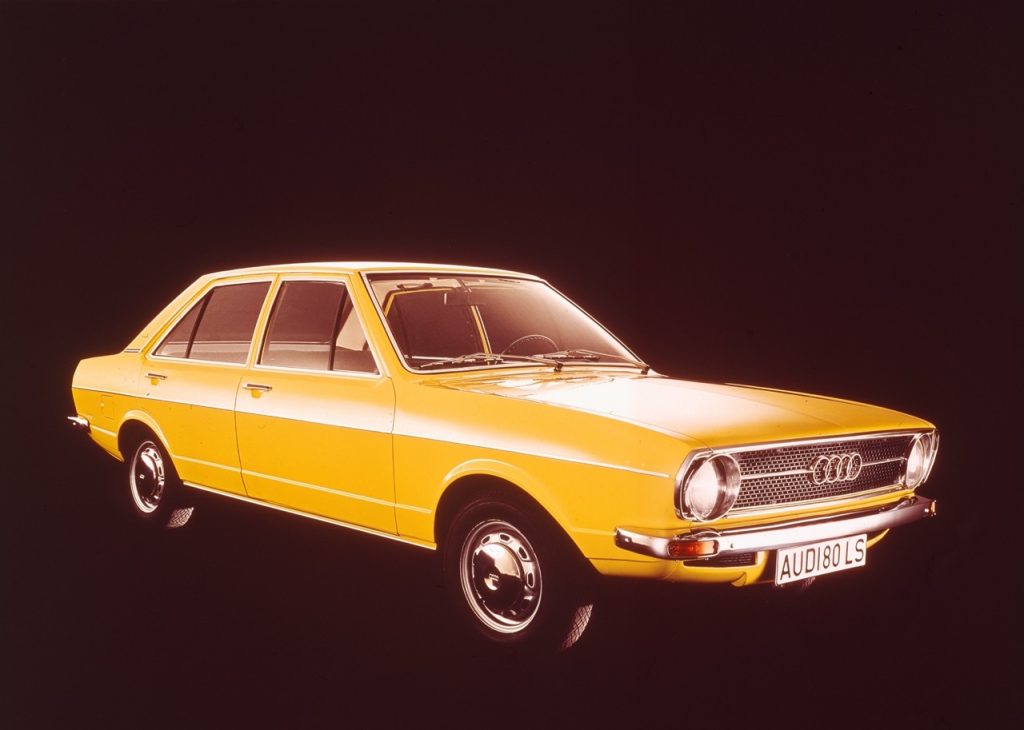
Its replacement, the Audi 80 B1, was introduced in 1972 in Munich when the city was hosting the Summer Olympics, and in 1973 in Australia and in North America, where it was sold as the Audi Fox. The B1 was a two- and four-door, 4.18-metre-long saloon designed by Hartmut Warkuss, with narrow screen pillars, a big greenhouse, and a square-set body shell.
Kraus demanded his engineers reassess every component to reduce weight, and as a result the two-door model weighed just 835kg. He also introduced a new series of 1.3- and 1.5-litre engines, including the ubiquitous EA827 series.
The year 1972 also marked the arrival at Audi of Porsche’s Ferdinand Piëch, who would be a driving force behind the brand for 21 years until he left for Volkswagen. Piëch was a key figure in the development of the Audi 80, the 100, and the Quattro model, as well as the five-cylinder engine which he’d helped develop as an independent project for Mercedes-Benz.
So, what did Motor’s testers think of the 80? From the photographs, the test team appear to have driven the 1973 80LS everywhere at top speed, and they liked the “good performance and excellent economy,” as well as the “fail-safe handling, slick gearchange, comfortable seats and low wind and road noise.”
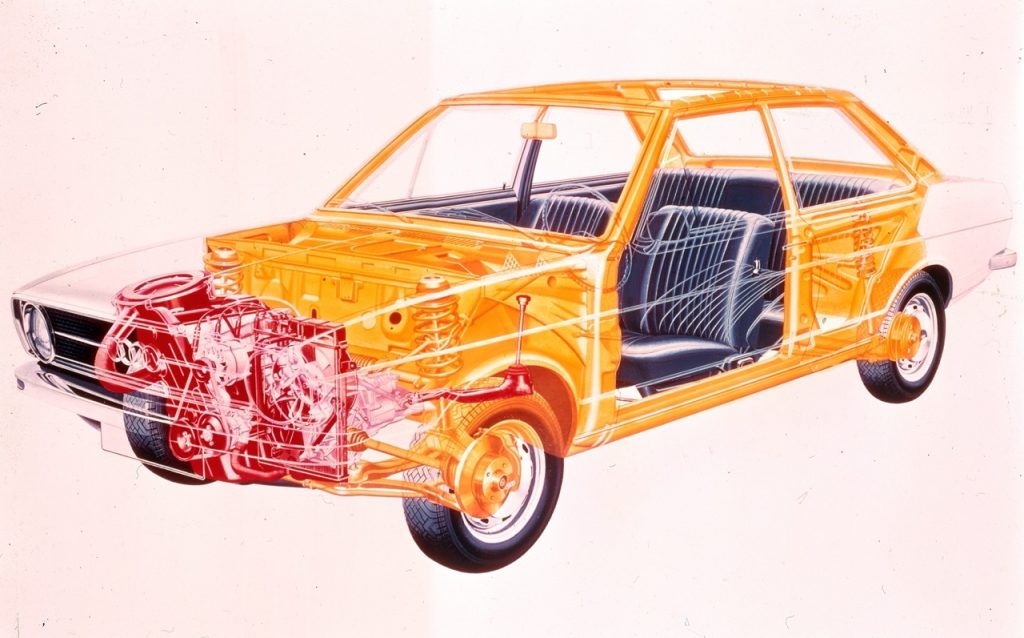
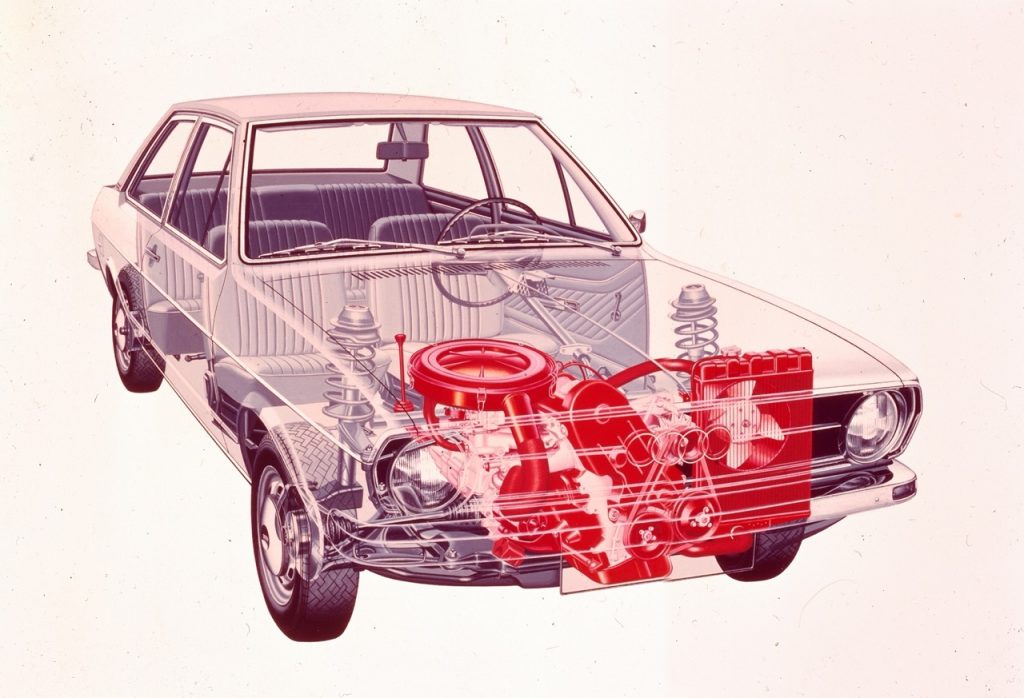
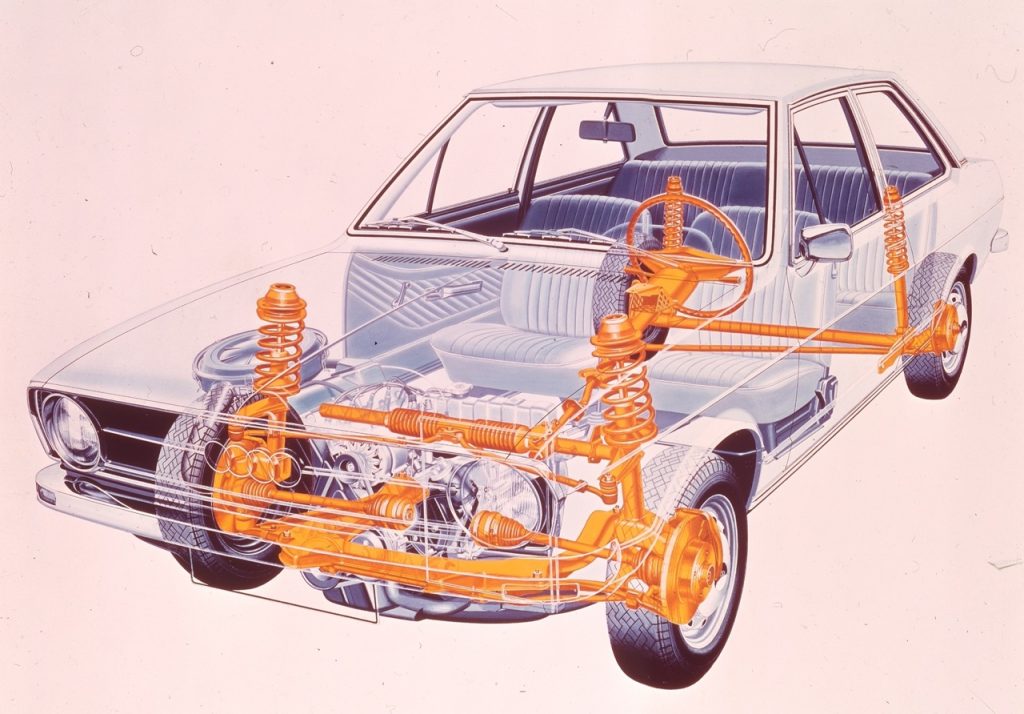
Grubbing around a bit for negatives, they found the 75bhp 1.5-litre engine was harsh and noisy at high revs, the pedal layout was poor, and the heater was hard to adjust.
Yet the EA827 units were incredibly long lived and tough, and their design influenced many subsequent engines sold by VW all around the globe. Suspended on MacPherson struts up front and a twist-beam with a Panhard rod in the rear, the 80 B1 won the 1973 European Car of the Year award against stiff opposition from Renault’s 5 model and the Alfa Romeo Alfetta.
There was even a sporting 80 GTE in 1975, which used a similar 110PS, 1.6-litre fuel-injected engine found in the VW Golf GTI.
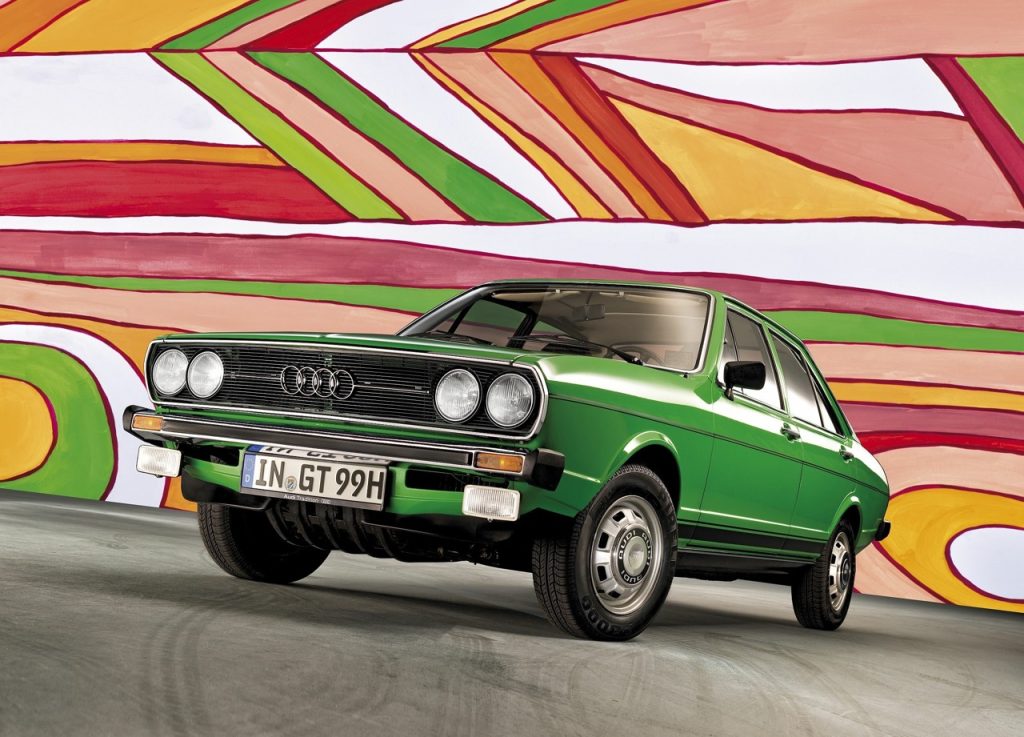
But Audi was still a parallel manufacturer to Volkswagen, and while the 80 preceded the new Passat by a year, it was pretty much the same under the skin. It sold well though. By the end of production in the summer of 1978, more than one million B1 80 models had been built.
The B2 model was introduced in 1978 (1979 in the US) and continued to 1986, before being replaced by the B3. Still longitudinally front-engined, this platform would eventually underpin the VW Passat, the Audi 80/90, the 4000, the liftback Coupé, the Quattro, and the VW Santana. But it was the beginning of the tail starting to wag the dog, with the Passat taking its lead from Audi.
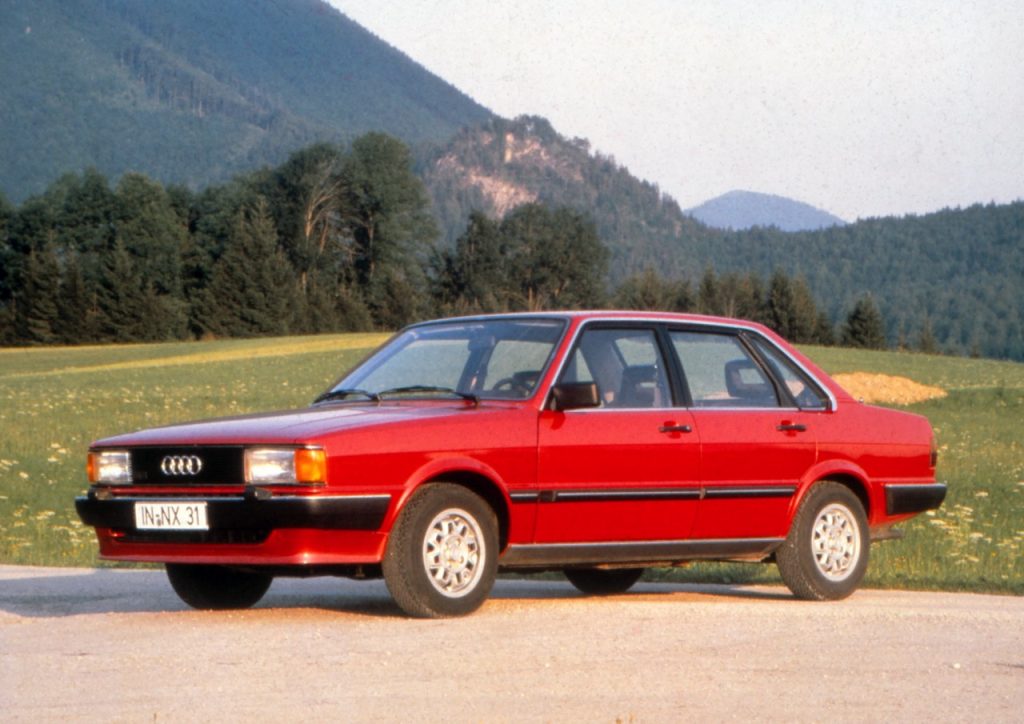
The Giugiaro-designed body was inspired by the 100 model, and its lines were softer and arguably better resolved than the B1. It was also heavier (just over a tonne), but the car was better equipped, the engines produced more power, and the performance was increased.
Motor’s testers pointed out that this new car was being launched from a position of strength for the company and they really liked it apart from the £5200 price and the booming 85bhp 1.6-litre engine in the GLS model. “An otherwise superb car that will appeal particularly to the enthusiastic driver,” read the standfirst.
Though the B2 range had no Avant estate model, most enthusiasts will remember this generation for the amazing 1980 Quattro, a coupé with a clever 4×4 system based on the VW Iltis 4×4 military vehicle. It had been proposed by Audi chassis engineer Jörg Bensinger and developed with the help of Walter Treser, the director of pre-development, and all of it pushed on by Piëch, who could see how this car could clean up in the World Rally Championship—as indeed it did.
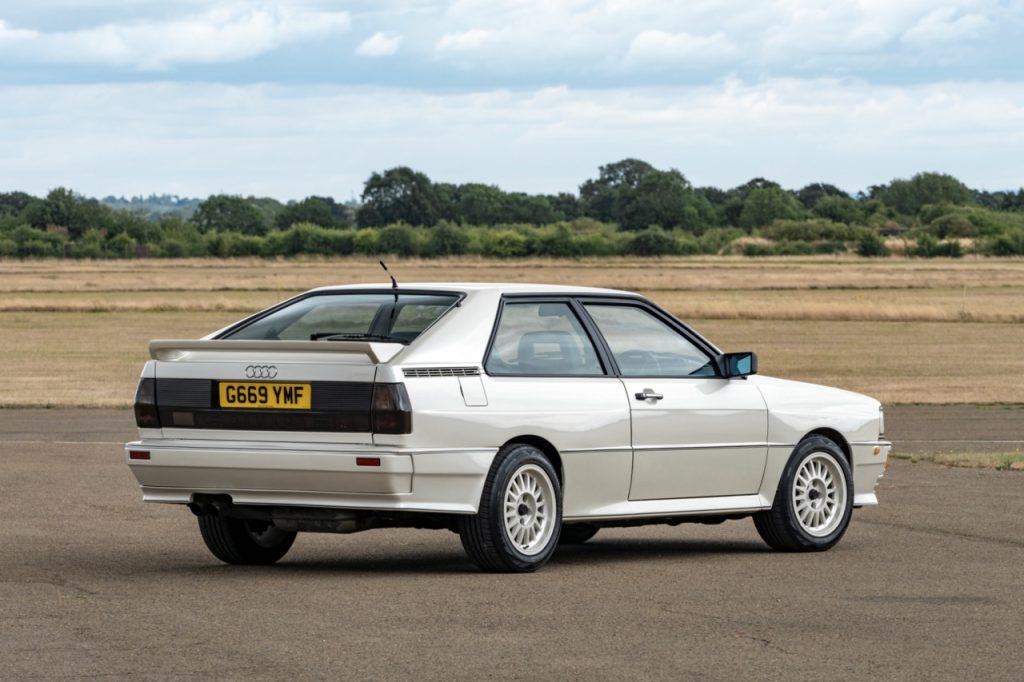
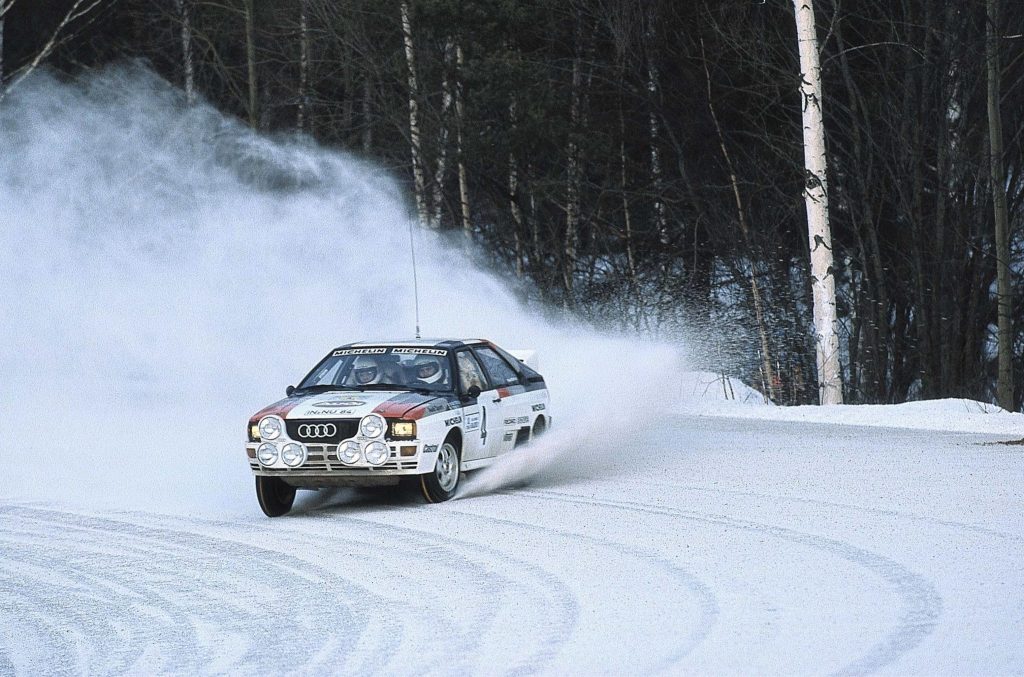
In the hands of Walter Röhrl, Michèle Mouton, Stig Blomqvist, and others, the Quattro won 23 world championship rallies and it set the tone for the company from then on, with the phrase Vorsprung Durch Technik (progress through technology) picked up from a faded poster on a factory wall in Ingolstadt by John Hegarty of the advertising agency BBH and proving a surprising hit with the UK buying public.
While driving the then-new A4 on its launch route in 2007, I followed an early-’80s Audi 80 B2 for miles. This was in Portugal, where they tend to look after their cars, but the condition of this quarter-century-old Audi was remarkable. Its metallic green paintwork was waxed and shiny and it looked well maintained, but above all those Giugiaro lines were still sharp and relevant.
I made the usual smart-aleck insiders’ comments about its well-documented lack of boot space and small rear seats, and then fell silent for a while.
“Still a damn good-looking car,” I said to my driving companion.
“I thought so, too,” he replied, “and aged a lot better than a 25-year-old BMW or Merc.”
The B2 got a 1984 facelift, and in the US it was called the 4000, but by 1986 it was all over in favour of the B3. Finally, the link with the Passat was severed, with the VW going over to a transverse engine layout based on the Golf and the Audi continuing with the technically superior but more expensive longitudinal engine. The new rounded shape was more slippery through the air, and various innovations were introduced, including a galvanised body shell and Audi’s Procon-ten safety system, which used a series of steel hawsers to pull the steering wheel away from the driver in the event of a head-on accident. This largely forgotten system was introduced prior to the widespread adaptation of the airbag.
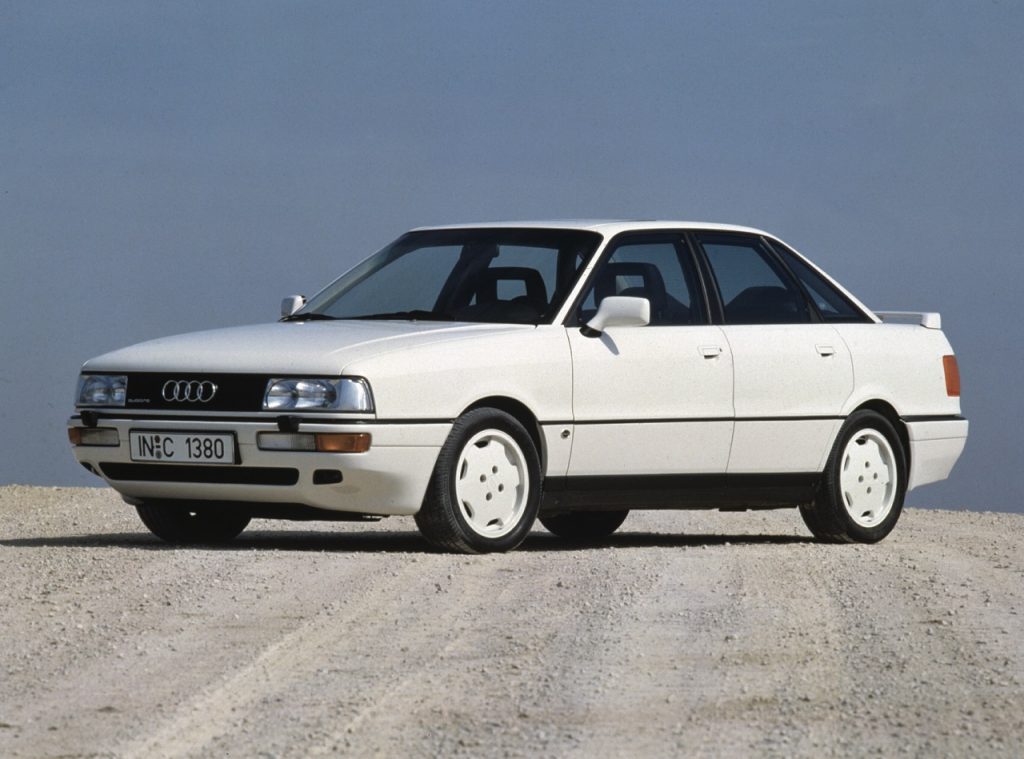
Still, the equipment levels were quite modest, rear headroom was an issue, and the gussied-up 90 model wasn’t the entire answer, though it did introduce the inline five-cylinder engines to the 80 shell.
Motor’s testers got their hands on a 90 version in 1987, a mean-and-moody black model with a 136bhp 2.2-litre five-cylinder engine. Of course, they liked it, reckoning that the Ingolstadt car was a match for a BMW 325i in terms of comfort and build quality, if not in terms of outright performance; the Audi’s top speed of 129mph and 0–60mph in 9.2sec didn’t compare well with the BMW’s 135mph and 0–60mph in 7.4sec.
On the sporting front, the Quattro eventually bowed out and the Sport coupé took over. With the 20-valve turbo engine and all-wheel-drive system, it was still a special thing but lacked that motorsport edge. I drove one out to the Nordschleife in Germany, where we repeatedly lapped the old race circuit without any major issues, apart from a lengthening brake pedal.
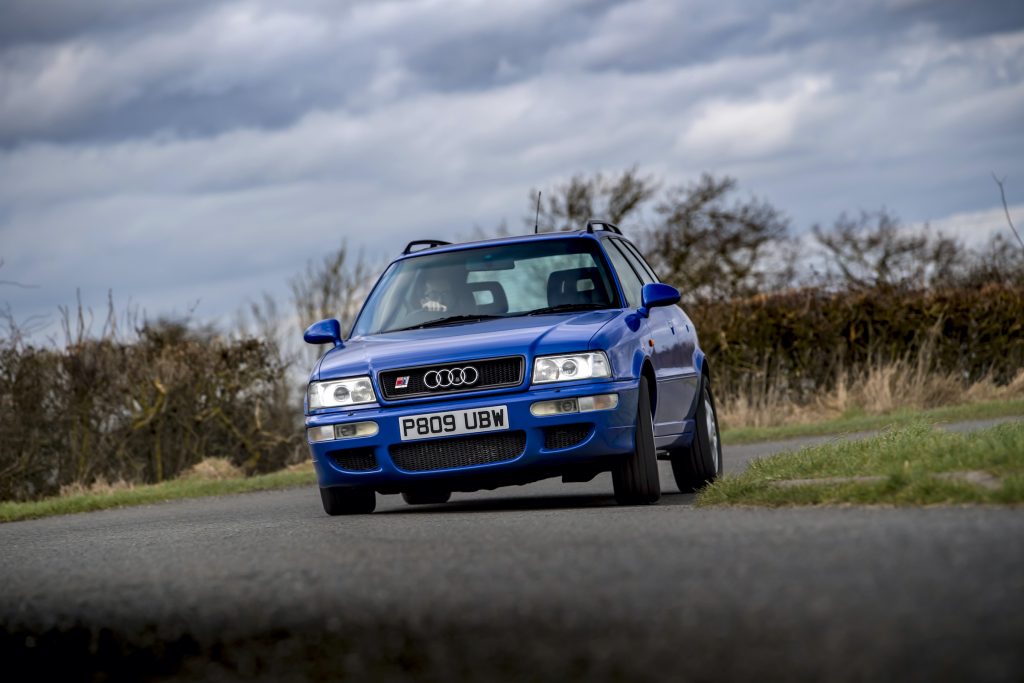
The B4 arrived in 1992 with a much-needed facelift that had been signposted with the 1990 Audi Coupé S2. It marked the full establishment of Audi’s tanks on the lawns of Mercedes-Benz and BMW, though it didn’t last long, as it was replaced with the A4 in 1994. But before it went, it established a marker that left rivals slack-jawed with envy: The B4 fourth-generation estate formed the basis of the Porsche/Audi-engineered 311bhp all-wheel-drive RS2 estate, which was the first of Audi’s mad shooting brakes. Produced between 1994 and 1995, the RS2 was built by Porsche, with Porsche brakes and suspension. These electric blue cars were an unexpected hit and production exceeded all expectations at 2891 models.
To drive an 80 model today is mostly to appreciate the sort of engineering that went into, it rather than the velour-upholstered seats that seemed so modern at the time. Piëch drove his engineers hard, and at times the 80 was more than a match for the Mercedes and BMW alternatives. It was a considerable achievement.
The importance of the car to him is evidenced by the fact that in April 1977, at his 40th birthday, the staff of the Porsche hotel where his celebrations took place presented him with a 16-inch marzipan representation of the Audi 80.
Perhaps above all the Audi 80 reminds us that carmaking is a relatively simple task at heart. Make high-quality, desirable cars which people want to buy—and keep doing it.
Audi’s 80 is a salutary reminder of that fundamental truth.
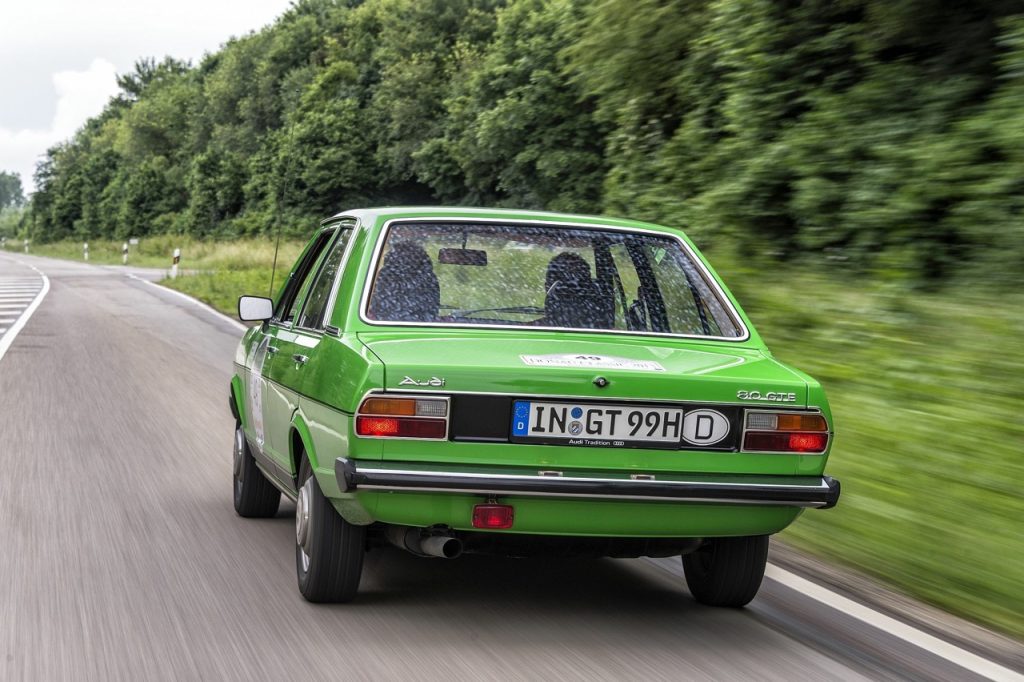










I remember visiting our local Audi dealers ( westmorland motors Wigan) in the mid 70s while my dad admired early Audi 80s and 100s, unsure why he never got one and stuck with Fords and Vauxhalls… fear of the unknown probably
I had a 1984 Audi 80CD. It had the 2 litre 5 cylinder engine and was the proverbial off a shovel. It is still the best car I’ve ever driven and I would love to have one again!
I bought an M reg Audi 80 at a farm sale for less than three hundred many years ago, as my wife needed a replacement for her then car, can’t remember what it was. However, although the red paint had faded, I kept it. In my mind it was the best car I ever owned, and to this day I regret turning it on its roof, though I walked away from the crash. My wife bought an A4 and has driven Audis ever since.
As a VW family in the late 70s-80s, we had a succession of Passats, and would spend the travel time spotting other VWs among the (mostly) British-made cars on the roads. The odd Audi 80 that cropped up always fooled my brother and I as the silhouette was near-identical and only the rear badge gave it away when we got close enough. An RS2 Avant is still on my dream garage list… sadly out of reach now.
Great article, Andy. Always had a love of Audi’s cars – (I’ve had 8) but that started when I visited British Car Auctions, Brighouse and took the plunge, snapping up a 1982 Audi 80 GLS – this was immaculate, and I paid £1645 for it – which was ‘top book’ at the time. Startling performance, plush red dralon seats – even to the door cards. The colour was the same as your photo #9 – deep red. Never gave me any trouble whatsoever. I traded it in a couple of years later for another B2 (facelift) but this was a 1986 navy blue ‘CL’ with the 1800 engine – I expected it to have more poke, but it was a little disappointing in that respect, and not quite as well kitted out. Still ultra-reliable. Eventually traded it in for a bigger car because of the growing family – a silver 1986 Audi 100. But the first was definitely the best one – unfortunately I never took photos of either. Happy days, fond memories.
Thank you Stephen, I’ve always had a soft spot for them. Actually currently in holiday in France and saw two today in regular service and still looking good. All the best, A